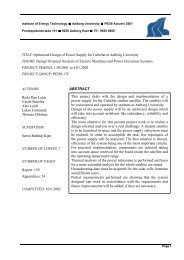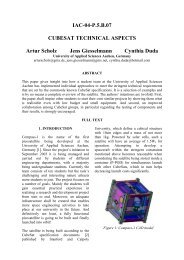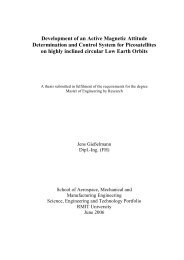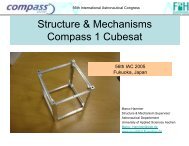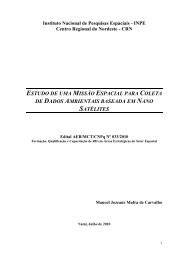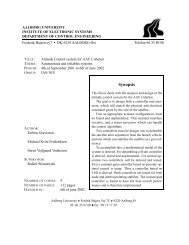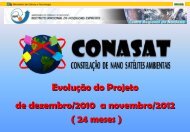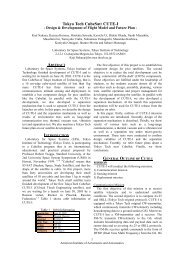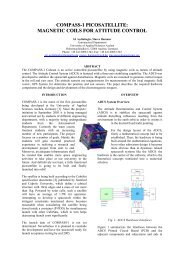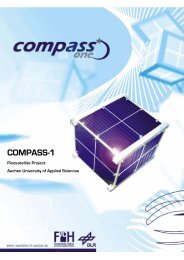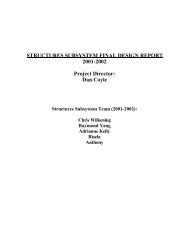DTU Satellite Systems and Design Course Cubesat Thermal ... - CRN
DTU Satellite Systems and Design Course Cubesat Thermal ... - CRN
DTU Satellite Systems and Design Course Cubesat Thermal ... - CRN
- No tags were found...
You also want an ePaper? Increase the reach of your titles
YUMPU automatically turns print PDFs into web optimized ePapers that Google loves.
Danish Space Research Institute<br />
Danish Small <strong>Satellite</strong> Programme<br />
Problem # 1 - Temperature Equilibrium<br />
Imagine our <strong>Cubesat</strong> made from Alodine 1200S coated aluminium: α = 0.08, ε = 0.15<br />
8 GaAs solar cells 2 x 4 cm with cover glas on each of the 6 faces of the cube:<br />
α = 0.75, ε = 0.83, η = 0.25 (solar energy to electricity conversion efficiency)<br />
The <strong>Cubesat</strong> is alone in the solar system far from the Earth.<br />
The <strong>Cubesat</strong> is illuminated by the Sun at 1 AU distance with a flux of: S 0 = 1367 W/m 2<br />
The direction to the sun is parallel to the line between opposite corners of the cube.<br />
1. Calculate the incidence angle of sunlight on the three sunlit faces<br />
2. Calculate the electrical output from the solar cells<br />
3. Calculate the equilibrium temperature of the <strong>Cubesat</strong><br />
Temperature equilibrium<br />
Absorbed power:<br />
Emitted power:<br />
Q a = S 0 ⋅α⋅A ⋅ cos(θ)<br />
Q e = ε⋅σ⋅A r ⋅T 4 r (approx.)<br />
Stephan-Boltzmann constant:<br />
σ = 5.6696⋅10 -8 W⋅m -2 ⋅K -4<br />
Equilibrium condition: Q a = Q a<br />
FH 2001-08-29<br />
<strong>Cubesat</strong>_<strong>Thermal</strong>_<strong>Design</strong>.ppt<br />
Slide # 12



